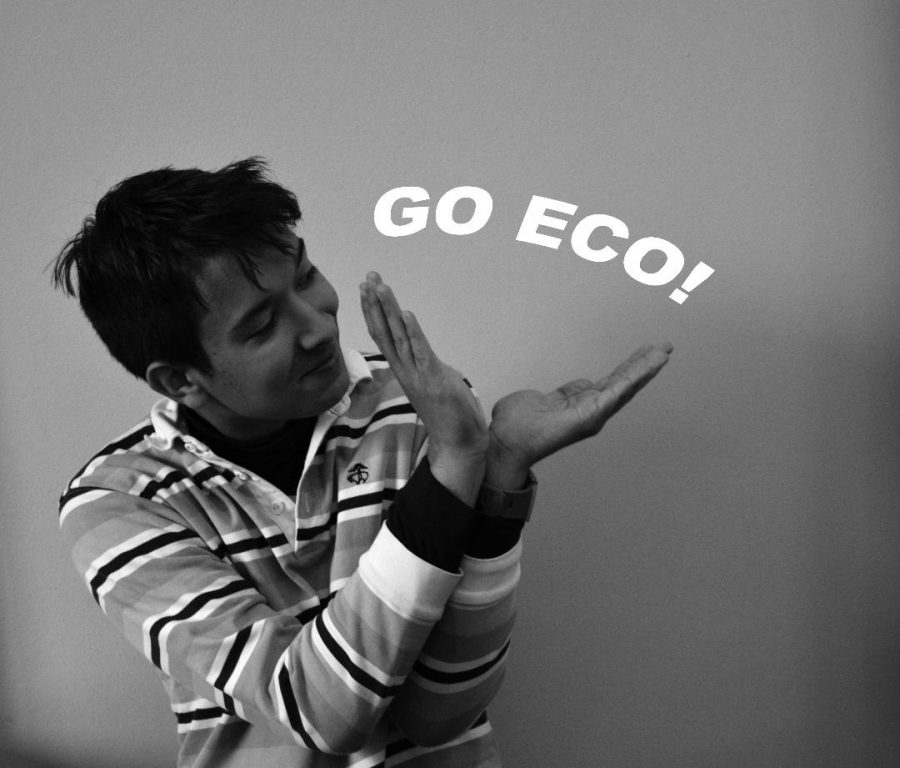Eco team update: the meadow is finally here!
May 25, 2019
After a year of hard work, careful planning, and team work, the The Eco-Team meadow is flourishing. The soft green cushion-y meadow can be found just outside the Wilmington Friends School tennis courts. As Spring transitions into Summer, it becomes more beautiful by the day. Austin Sarker-Young ’22 explained, “The Eco Team has largely finished plant work on the meadow. There is some consideration for an expansion of the meadow, none of it is official yet. We all need to see if the faculty supports this decision first. The Eco Team also wants to earn the NWF Bronze Award. This award would require us to interview teachers, have editorials written, and have official statements published by the school supporting the environment. Additionally, the bulletin board where the recycling is right now is going to be replaced with a small exhibit about the Eco Team. Overall, the meadow is coming along nicely. Before the meadow was dormant, but now the meadow is growing.” Though they have come far, the Eco Team still has a way to go before their work is done.
When asked how he felt about the meadow, Upper School Computer Science Teacher, Samuel “Jenks” Whittenburg responded with, “We have a meadow?” Unfortunately, the new meadow is not yet well known to the WFS community. Olivia Delgado ’21 expressed interest, but noted “I think that the location of it is cool, but not a lot of people actually know it exists.” Having a meadow on campus adds great value environmentally, but with more publicity, more people would benefit from it as well.
The WFS meadow lives up to the standards of other local meadows such as the meadow at Pepper Creek in the Delaware Botanic Gardens. This meadow is known for its vivid colors and having a sense of a celebration of nature, similar to the one at Friends School. Additionally, no local meadow list would be complete without talking about Winterthur. Winterthur is a museum and garden that has a meadow right on the grounds. This meadow is another fascinating sight as well due to the vast amount of space it covers. As a result, Winterthur is able to host many events on it’s grounds such as Point to Point, Garden Insider Walk: Meadow Walk, and Naturalistic Garden, to name a few.
The Wilmington Friends meadow was made from human intervention, otherwise known as an artificially conceived meadow. However, there is a wide variety of different types of meadows. One example is an agricultural meadow. These grasslands are grazed by some sort of domesticated animal. They will almost always be used for the purpose of making hay, typically in lowland and upland fields. Agricultural meadows have been on a steady decline in the coming years, especially in Britain which has lost a majority of it’s hay meadows over the years. There are fewer than 15,000 hectares of lowland meadows in Britain according to BBC News Science & Environment writer, Rebecca Morelle.
On the other hand, a transitional meadow begins when a meadow is no longer in use and stops being grazed. Transitional meadows are extremely rare to find, as the meadow will eventually be taken over by plants and trees as the forest surrounding it will make it once again fully-wooded area. The most interesting part about a transitional meadow besides their rarity is that Native Americans used to use them to hunt on easy prey as a grounds to bait out animals such as deer. Some of these meadows that they used back from thousands of years ago are still around to this day as a result of multiple forest burnings by Native Americans.
Besides being beautiful to look at, meadows are also very important for environmental reasons. The lack of meadows from little to no natural grazers is changing the environment for the worse. This may not seem like a problem, but without meadows, it is much harder to preserve biodiversity. They can be utilized for their water, and they reduce the need for fertilizers. Another problem that is more recognizable universally is the decline in bee populations. Having more meadows globally could be one way to drastically increase and keep the bee populations safe for generations. Something as simple as a meadow can drastically influence our eco-system for the better.































